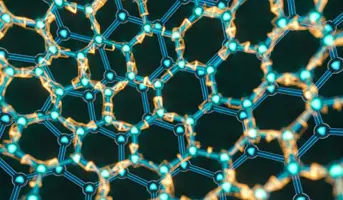Technical Ceramics

Chemical Resistance
Contact usThe resistance of a ceramic to a particular chemical substance can be characterised by immersing a coupon of the ceramic into the chemical substance for a specific duration and then noting any changes in the visual appearance of the coupon, measuring the coupon’s change of weight, volume, or dimensions, and measuring the changes of other properties such as bending strength. Because chemical reactions are accelerated by chemical concentration, temperature and pressure, these variables should be controlled in the test. The geometry and attributes (e.g. porosity) of the test coupon will also impact the reaction rate due to exposed coupon surface area versus coupon mass affects.
Labware
Depending upon the application, chemical resistance may be desired or not.
For example, labware needs to be resistant to a broad set of chemicals over a range of temperatures. Morgan publishes a comprehensive guide for its glazed and unglazed laboratory porcelain labware and its Alsint™ 99.7 Oxide ceramic labware.


Ceramic Glazes
Glazing is applied to ceramics to prevent the ingress of fluids into any open surface porosity. Labware is often glazed to make it easy to clean between uses. Ceramic laser reflectors used in the reflecting chamber of solid-state lasers are glazed if active cooling fluid is used.
Chemical Processing Industry
The chemical processing industry requires materials resistant to the corrosive effects of strong acids and alkalis for applications such as valve, pump, and seal components. Nilcra® zirconia demonstrates exceptional chemical stability and the extreme hardness needed to perform under the corrosive wear of these applications.

Metal and Glass Processing Industry
The metal and glass processing industry requires materials that resist the corrosive effects of hot off-gassing as well as the thermal gradients imposed by the processing steps. Morgan’s kiln furniture (MgO spinel and Halsic™), thermocouple protection tubes, and conveyance rollers (Sillimantin™ & Halsic™ and fused silica) provide long lifetimes in these corrosive environments enabling the manufacturing operations to achieve reliable process up-times.
At times, the chemical environment of processing conditions can be less severe than the conditions during cleaning, disinfection, and sterilisation of the processing equipment. For example, appropriate ceramic components should be selected to withstand chlorine compounds used to sterilise production equipment in the food and beverage and pharmaceutical industries.
Investment Castings
Alternatively, in certain applications it is desirable for the ceramic to be susceptible to select fluids. Ceramic cores for investment castings need to maintain their structural and dimensional integrity during the casting of the molten metals to achieve the tolerance of the resulting castings’ internal cavities. However, once the casting is formed, the core must be easily, quickly, and completely removed to assure productivity of the casting operation. This is accomplished by engineering ceramic core compositions using combinations of silica, alumina, and zircon, such that it reliably withstands the conditions of the casting operation but is easily and quickly leached away by chemicals or by pressurised water.



